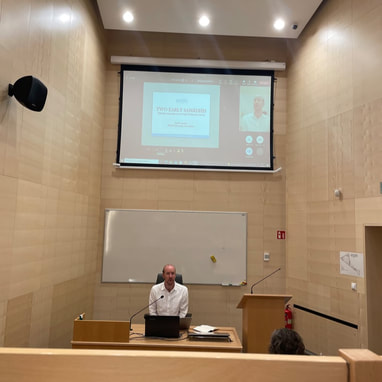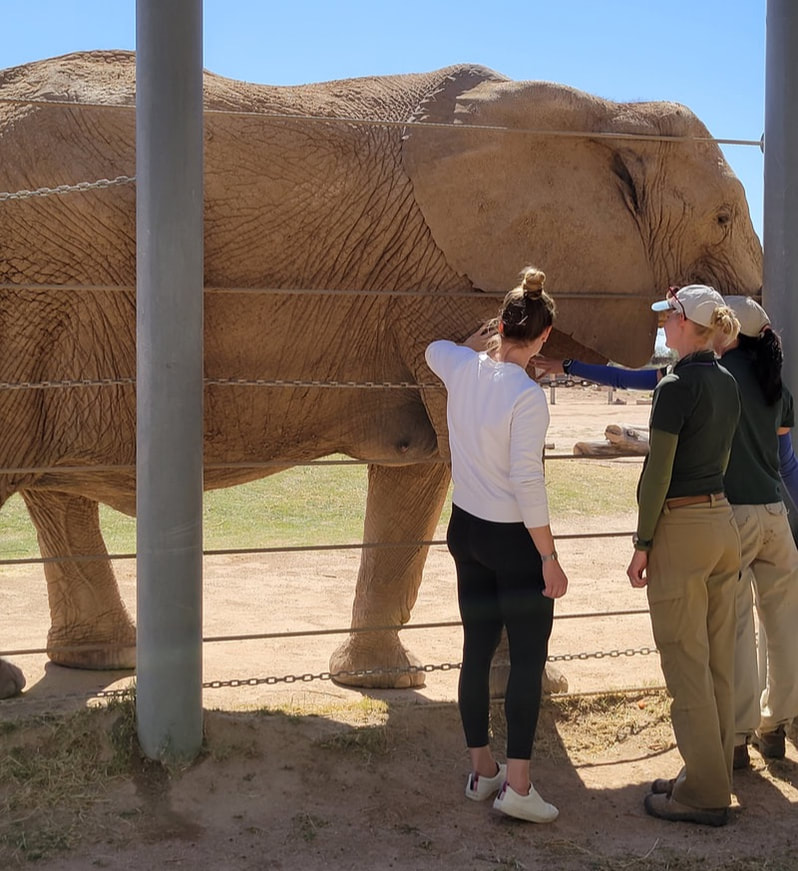|
Prior to the late nineteenth and early twentieth century, yoga asanas (postures) were primarily seated positions. For the most part, they were not practiced for physical strength or health. In his book Yoga Body, Mark Singleton illuminates the influence of weightlifting and other physical cultures on what becomes yoga "asana". Today, an "asana" can mean nearly any physical position. Aside from some positions that come out of hathayoga, many others draw their roots from contortion, muscle control, wrestling, gymnastics or calisthenics.  Source: "Sandow's System" (1894) Source: "Sandow's System" (1894) WARRIORS, TRIANGLES AND LUNGES Hathayoga texts do not contain postures like warriors, triangles or lunges. (This is not to say that no one ever stood in a lunging position, only to say that they were not part of yoga.) However, these positions feature in physical culture manuals like Sandow's System by Eugen Sandow from 1894. In Sandow's System, lunging positions are taught as "Heavy-Weight Exercises" and situate the legs in such a way to allow for an overhead press of a heavy weight. However, if we remove the weight, these same positions are what we today call "Warrior 1", "Reverse Warrior" or, as in the case above, "Triangle". INFLUENCE ON GHOSH The impact weightlifting had on Bishnu Ghosh and his students is well documented. Ghosh's first book is Muscle Control and Barbell Exercises and contains nothing called asana or yoga. Ghosh's early student Buddha Bose writes in his book Key to the Kingdom of Health Through Yoga (Vol. 1) about the influence of physical culture and even Sandow himself: "I have seen hundreds of physical cultists with mighty muscles, sportsmen of great proficiency, powerful wrestlers, champion swimmers and clever boxers with immense powers of endurance and have respected the determination and ability which produced their skill." (p. 6) He then writes about the "powerful physique as is possessed by men like Sandow" (p. 6).  Source: "Sandow's System" (1894) Source: "Sandow's System" (1894) While Ghosh, Bose and many other teachers of yoga from the first half of the twentieth century go on to teach asana, the influence of weightlifting appears to continue. Even a position like the sit-up found in Bikram Yoga is extremely similar to the position shown with weights in Sandow's System. Sandow instructs that "it should at first be performed without the dumb-bells, then with dumb-bells of increasing weight" (p. 215). The sit-up, Sandow writes, "is designed to bring into play the rectus abdominis and other muscles of the abdomen, and has an important effect on the digestion" (p. 215). Over 100 years later, Choudhury writes in Bikram Yoga that "the sit-up strengthens and tones the abdomen, invigorates the body and increases the flexibility of the spine" (p. 164). CONCLUSION The influence of calisthenics or contortion on yoga asana is seamless. Neither of these practices incorporate apparatus or weights of any kind. Since asana is also a bodyweight practice, this is an easy transition. However, weightlifting uses equipment. When weightlifting positions mix with calisthenics or yoga asana, it is interesting to note what happens. Are we simply forgetting about the kettlebell every time we do a Warrior pose?? Sources:
Bose, Buddha. 1939. Key to the Kingdom of Health Through Yoga-Vol.1. Choudhury, Bikram. 2007. Bikram Yoga Ghosh, Bishnu. 1930. Muscle Control. Sandow, Eugen. 1894. Sandow's System. Singleton, Mark. 2010. Yoga Body.
3 Comments
In just a few months, we'll begin the 300 Hour Ghosh Yoga Advanced Teacher Training program. This is a program that has been in the works for quite some time. It is geared toward those who are exploring the practice and study of yoga at an in-depth level.
Just recently, we published the full curriculum. (You can find it here) While this program is "advanced", we do not consider that to mean that deep and complex physical postures are the only path forward for serious practitioners. While the body is one aspect of practice, the breath, the mind and ultimately, the inquiry into the self are other important aspects of yoga. We've designed the curriculum to tackle ideas of the self by examining concepts of thought, belief, faith, knowledge & truth. As we explore the mind we will look at different meditation practices. These are documented in various texts and traditions. We will study texts as well as look at what modern research has to say about the practice of meditation. Personal practice will be a large component of this course. This means physical, muscular practice and it also means breathing practices. A seated pranayama practice will be taught and cultivated. We are excited to dive in deeply alongside those committed to the exploration of yoga. As we learn, we continuously recommit to study and practice. The path is ever unfolding. Last week, Scott and Ida had the pleasure of attending the YDYS 2022 Conference in Krakow, Poland. The conference was co-hosted by Jagiellonian University Institute for the Study of Religions (Krakow) and the SOAS Centre of Yoga Studies (London). The aim of this academic conference is reviewing and discussing recent developments in the field of Yoga Studies. Over the course of 4 days, there were over 50 papers presented by scholars from all around the world. The topics varied widely, from discussions of gender and abuse, to yoga in Poland, yoga in central and South America, to new translations of unknown texts. The team of scholars that is working on a critical edition of the Hathapradipika presented their progress. It seems that this text, as vital and influential as it has been for centuries, has been in a corrupted state for centuries.
 Reid Park Zoo, Tucson, AZ Reid Park Zoo, Tucson, AZ We recently had the pleasure of working with the staff of Reid Park Zoo in Tucson, AZ. In addition to giving lectures on breathing and mindfulness techniques, teaching asana classes, we got to meet the elephants and tour the zoo! Lucky us! Reid Park Zoo is at the forefront of addressing animal care staff well-being which leads to animal wellness. Staff at Reid Park Zoo carefully monitor animal wellness on a regular basis. They look for appropriate behaviors to make sure the animals are acting similarly to the way they would in the wild. Under the vision and direction of Sue Tygielski, Reid Park Zoo is incorporating yoga asanas, breathing & meditation to help reduce stress and anxiety in the animal care staff. This in turn, helps the animals. These techniques are primarily simple breathing and mindfulness meditation practices which have been shown to reduce stress and burnout. For more details, enjoy the short clip below. Well done to the Reid Park Zoo team for addressing the link between animal care staff well-being and animal wellness! We are so happy to be a part of it. |
AUTHORSScott & Ida are Yoga Acharyas (Masters of Yoga). They are scholars as well as practitioners of yogic postures, breath control and meditation. They are the head teachers of Ghosh Yoga.
POPULAR- The 113 Postures of Ghosh Yoga
- Make the Hamstrings Strong, Not Long - Understanding Chair Posture - Lock the Knee History - It Doesn't Matter If Your Head Is On Your Knee - Bow Pose (Dhanurasana) - 5 Reasons To Backbend - Origins of Standing Bow - The Traditional Yoga In Bikram's Class - What About the Women?! - Through Bishnu's Eyes - Why Teaching Is Not a Personal Practice Categories
All
Archives
May 2024
|















 RSS Feed
RSS Feed